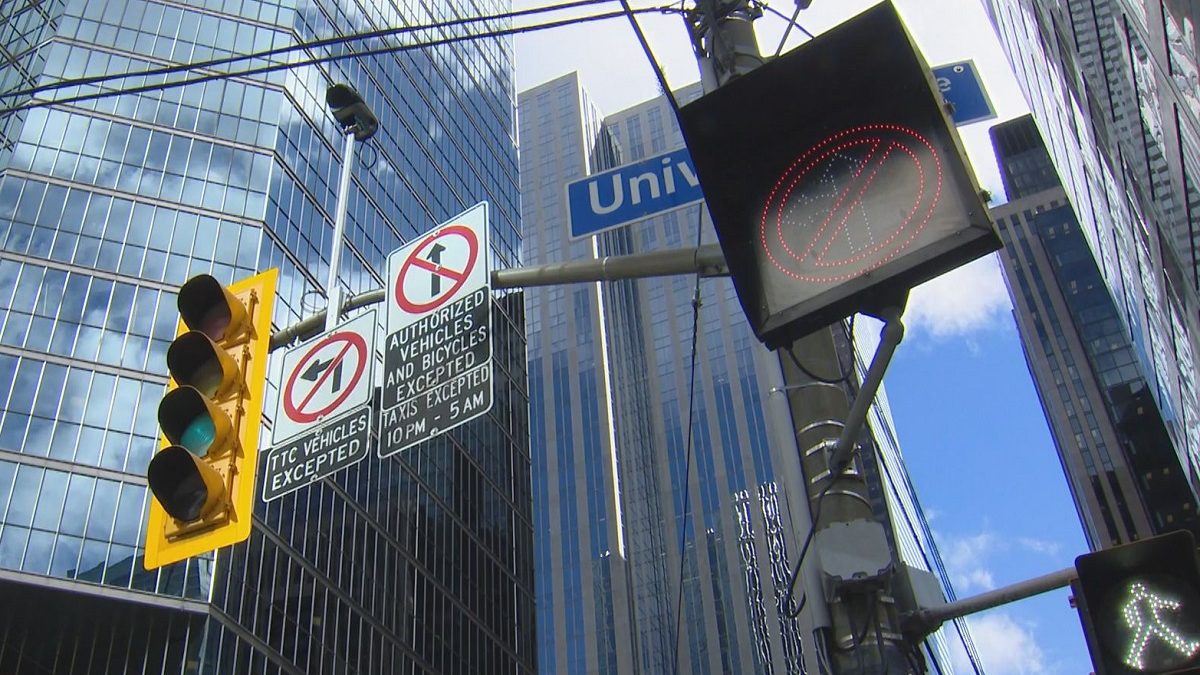Tech
New tech, calls to hike fines part of updated Toronto traffic congestion management plan

As many parts of Toronto continue to choke on traffic gridlock, city council has passed updates to its plan to try to manage congestion and make it easier to get around.
However, many of the plan’s elements still require further study or approval from the Ontario government.
“We are being strangled by congestion at every turn in every part of the city. There is gridlock, people are frustrated by it and it’s starting to feel like there are no solutions in sight,” said Matti Siemiatycki, director of the Infrastructure Institute at the University of Toronto.
“It’s only when you look at the studies that show that our congestion is worse than our peers, that we are third in the world by some studies, that it really internalizes and recognizes that it is worse here than other places. We do need to be doing better.”
The most noticeable direction approved during Thursday’s Toronto city council meeting is making a formal request to provincial officials to hike fines for improperly stopping in an intersection (dubbed “blocking the box”) to $450 from $90 (up to $500 from $120 if it occurs in a community safety zone).
“It blocks traffic in all directions. It’s dangerous for pedestrians. It’s dangerous for cyclists,” said Coun. Jennifer McKelvie, who chairs the City of Toronto infrastructure and environment committee.
Siemiatycki said that initiative has the potential to be effective.
“We know that enforcement works,” he said.
“That will actually get people’s attention and encourage them to change their behaviour. So I think that’s important, but it will only be as good as the enforcement that follows.”
Other initiatives, which Toronto city council asked staff to report back on before approval is considered, included ways to encourage shifting more road usage to Mondays and Fridays, implementing peak-hour delivery restrictions (subject to public consultation), charging a “road occupancy congestion management recovery fee” and increasing enforcement on those who block bike or transit lanes.
Toronto to see pilot projects involving AI, new tech to help with transportation
On Thursday, city council also gave the go-ahead to launch “transportation innovation projects” that use “both pre-commercial and early-market technologies.”
As part of that direction, officials with Rogers Communications—the parent company of CityNews—said the company, in partnership with NoTraffic, is installing a 5G-driven artificial intelligence system at five intersections. The cameras will be on University Avenue and York Street at Adelaide Street West, King Street West, Wellington Street West, Front Street West, and Bremner Boulevard.
The system will capture real-time data about traffic volumes, speeds and congestion levels at the intersections.
The pilot project will begin with a months-long phase focusing on data collection. The City of Toronto will then use the AI software to determine what improvements could be made to help ease congestion at the intersections. Rogers staff said the technology would eventually be able to analyze and manage traffic in real-time, including through AI-powered traffic signal adjustments.
During a visit to University Avenue and Adelaide Street West on Thursday, Dayal explained the cameras anonymize faces and capture vehicles, cyclists and pedestrians. He said the only data captured is how people are travelling.
“Having that bird’s eye view of the intersection, you can have a real appreciation of the conditions in real-time,” Dayal told CityNews.
“What happens is these (traffic signals) are on a fixed timeline and now what you have the ability to do is to control the intersections more dynamically.
“The idea here is being able to monitor what’s happening in the intersection … to adjust to where the queueing is happening, or where the traffic is flowing from, will obviously then give you an opportunity to improve the idle time which obviously is contributing to loss of productivity, but also greenhouse gases.”
The City of Toronto previously alluded to its intention to pursue such pilots within its congestion management plan.
Transportation Services general manager Barbara Gray said in a report to the infrastructure and environment committee last month that the city would work “with the local telecommunications companies to create a virtual testbed whereby technologies can be physically implemented in the field but tested in a safe, secure cloud computing environment.”
This is the first time Rogers is deploying the technology in a major urban environment.
In 2022, it conducted a two-week test of the system as part of a research partnership at the University of British Columbia’s Vancouver campus, where it similarly installed its traffic sensors and cameras at five intersections.
The company said the UBC pilot helped reduce vehicle delays by 182 hours and pedestrian delays by 93 hours on campus while also slashing 2.8 tonnes of carbon emissions during the trial.
Dayal said they saw a 20-per-cent reduction in vehicle idling time.
Congestion reiterates the need to invest in transit and active transportation: advocate
When asked about the use of technology, Siemiatycki said he likes the pilot projects. However, he noted that the discussion surrounding intelligent transportation systems has been going on “for decades” and technology alone won’t solve the traffic-related headaches residents feel.
“All of this tech innovation might make a marginal difference, but at the end of the day our big challenge is there [are] too many cars, not enough spaces,” Siemiatycki said.
“If we really want to make a dent in this, we have to encourage people and provide them with a viable option to use public transit and active modes of transportation. We have to be thinking about how much, and where, people use their cars.”
He said to reduce vehicle dependency, more strides need to be made when it comes to land-use planning and getting new and existing concentrations of housing on transit lines.
Siemiatycki added while there doesn’t appear to be political will in Toronto, thought should be given to higher taxes for parking spaces and tolls for entering certain congested areas.
“You’re starting to see some of these come on board not just as a way to raise revenue but also as a way to encourage people to use other alternative modes of transportation where it works for them and fits into their day,” he said.
With files from The Canadian Press








